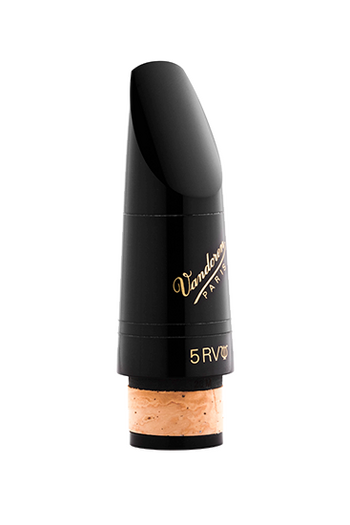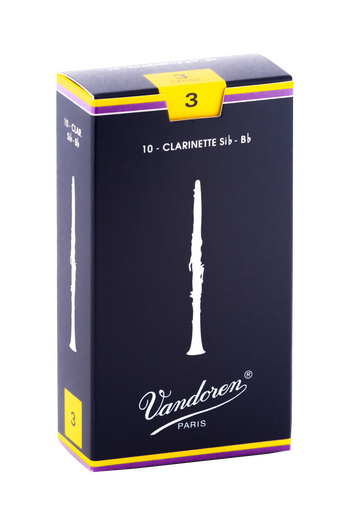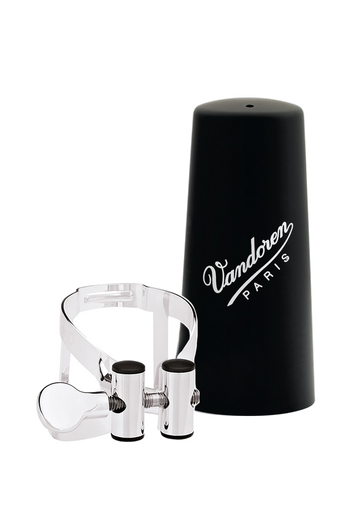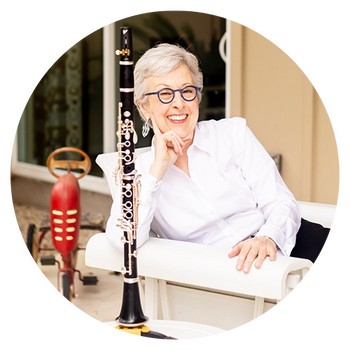Breaking Bad Clarinet Sounds: When Good Players Do the Wrong Things!
By Paula Corley
Date Posted: June 16, 2017
Breaking Bad Clarinet Sounds: When Good Players Do the Wrong Things!
Three elements that adversely affect clarinet sound:
- Slow Air Speed
- Incorrect Embouchure Grip/Tongue Placement
- Mis-matched Equipment
I. Air Speed
Most students do not understand how much air it takes to make the clarinet response properly. The impact of slow air speed is systemic: it greatly affects tone quality as well as articulation and response. The speed of the air must be fast enough for the player to feel resistance.
If there is one thing students do well, it's shouting! Use this concept to help get the air moving. Shouting "HEY" is a good place to start becuase the concept is familiar to students. Refining to "ee" with firm corners will get the air moving to the front of the mouth.
- Shout “Hey”
- Next shout “ee”
- Turn shout to “ee”air stream while pushing corners “in” to direct air forward.
Slow air speed at the beginning of a note is also a common problem. When the air speed is too slow or not voiced with "ee" the sound may start with a "scoop," be fuzzy and/or unforcused. Have students practice starting notes using a regernece pitch tuner as a model for clarity. (See Louder Clear/Softer Clear Exercise).
- Work for clarity, not blend.
- Air is intense at all volumes.
- To reduce heavy tongue starts tell the student to “get the tongue off the reed quickly.”
Why do students with good technique fail at all region auditions? The lower and upper registers do not match in quality and have obvious "break: between them due to an inconsistent air stream. To address this issue, start register shifts as soon as feasible. Air and voicing is the same in both registers - "ee."
Be aware that the lower register is relatively easy response. It is important to play with a full, focused sound while in this register. Adding the register key creates a slight 'delay' in middle register response. To account for this ave students learn to put a slight crescendo at the end of the note preceding the register change. Everything:grows: from the bottom.
With beginners, work for a vibrant sound from (Treble Staff) first line "E" down to "Bb" just below the staff. When the Bb is focused, check the middle register. Have students play Bb while you press the register key. If the top note does not speak, here are some possibilities:
- Slow air speed
- Weak grip/mouthpiece placement
- Tongue placement (voicing) HAH instead of EEE
- Equipment: reed is too soft


It is important for advanced students to practice higher (range wise) so that notes below are confident. Playing above high "G" is tricky. Fingering options are affected by player, equipment, and how the notes are approached.

II. Embouchure Grip and Tongue Placement
Grip
- The top teeth and corners are critical elements:
- The top teeth (grip) affect focus. When the sound is ‘loose’ or ‘flabby’, ask the student to take in more mouthpiece and/or put a little more pressure on the top of the mouthpiece.
- Corners affect endurance and overall tone quality. Ask students to direct corners “in” towards the mouthpiece and keep them firm.
- Most students do not take in enough mouthpiece. When it squeaks, it's too much. When it's sharp and "metallic" it can be too little. Playing on the edge of the mouthpiece encourages biting (to control sound).
- Avoid saying "make your chin flat." Use the 'straw principle' instead. Bottom lip should be firm but not stretched outward (smile). A smiley embouchure reduces endurance, overtones in the sound, and may encourage biting for control.
- The angle of the clarinet is in close proximity to the knees when sitting. Do not allow students to "duck" head when sitting.
Tongue Placement
- The clarinet sound happens at the front of the mouth
- The entire range of clarinet can be voiced with "EEE." Ask students to keep the tongue high and forward, close to the front of the mouth.
- A sure sign that the tongue it too low in beginners - open G is a high D.
- Nothing about clarinet is "relaxed" (especially oral cavity) except for fingers. Embouchure is firm.
- Tongue placement determines shape of the oral cavity. Undertones can be caused by a "relaxed" oral cavity and slow air speed - HAH shape. Togue is too low in front and floats up high in the back, shutting down the air.
III. Equipment
- There are no quick fixes.
- Equipment may enhance good playing, but it will not mask or improve poor playing.
- Go for clarity, not blend.
- Do not give beginners too much resistance, just moderate. Use equipment that requires students to use fast enough air to create back pressure.
- Most common error: Mis-matched reed strength to mouthpiece.
Instruments
Generally speaking, you can expect better materials (wood, springs, pads, etc.) and better tuning from higher priced models. My preferences:
- Buffet Crampon R13 - the industry standard
- Buffet Crampon E11 - lower cost; lots of 'zing.'
- Buffet Crampon Protige BC - Same basic design as R13 - great choice for beginners & marching band (synthetic).
Basic register shifts for younger players - start on the note that is most comfortable (chalumeau) and work up and down until the full chromatic is mastered.
Be sure to put a slight crescendo at the end of the lower note preceding the register shift. Think of the upper note as "lifting" out of the bottom note. This is an essential technique in playing clarinet.

Mouthpieces
Most students will be successful with standard mouthpieces. Beware of mouthpieces that require the purchase of additional equipment to play in tune. My preferences:
- Vandoren M15 (Profile 88, American Pitch):
- crisp & vibrant - works well for many
- Vandoren M30 (Profile 88, American Pitch):
- rich & vibrant - less resistance, for players with good control already in place
- Vandoren 5RV Lyre (Profile 88, American Pitch):
- crisp & vibrant - best beginner/intermediate choice, "in the middle" in every aspect

Reeds
- Too soft reed = 's spread sound, undertones.
- Too hard reed = 's cloudy and reedy sound.
- Softer clear/louder clear reed test: Have your student test reeds; try the exercise with just the barrel and mouthpiece (F#). Look for reeds that allow you to 1) play a true forte without spreading and 2) allows a soft, tapered release.
My preference: Vandoren Blue Box Traditional Cut - works well in humidity challenged environments.

Ligatures
- Ligatures do matter. Metal ligatures create more "zing" for most players.
My preference: Vandoren M|O - great flexibility for the reed; slightly different sound according to finish.

About the Author
Paula Corley is the Education Advisor for Buffet Crampon North America. She has 33+ years of teaching experience from middle school to university level. Most recently Paula served as the clarinet instructor at Texas Lutheran University where she hosted ‘clariNETWORKS’ – a very popular annual event for clarinetists of all ages and band directors. She is also a chamber music judge for Music for All's National Chamber Music Festival and served as the Pedagogy Chair for the International Clarinet Association from 2018-2020. Most know her as the ‘mayor’ of Clarinet City, a teaching website for all ages and stages of clarinet playing.
Originally from Mississippi, Paula grew up without access to clarinet lessons which sparked a lifelong interest in research for developing players. She is a graduate of Mississippi State University (BME) where she was named Alumnus of the Year in 2012-13 and Southern Methodist University (MM) where she worked with the legendary Howard Dunn. Paula taught in Plano, Texas ISD for many years before moving to Asheville, NC where she served as principal clarinet in the Asheville Lyric Opera and on the faculty at Mars Hill University (NC).
Author of So You Want to Play the Clarinet and The Break (Southern/Hal Leonard), Paula has performed and presented at music conferences throughout the US since 1998. She is a performing artist and clinician for Vandoren and for Buffet Crampon and her articles have appeared in THE CLARINET, Vandoren WAVE, The Texas Bandmasters Review, and The Instrumentalist. A new series of her arrangements for clarinet can be found at Hal Leonard. She also has two recorded works for clarinet: Unfamiliar Territory by Michael Markowski and Road Trip for clarinet quintet by Clifton Jones. Visit clarinetcity.com.